The Spice Islands: A Far East Eden

The spice islands
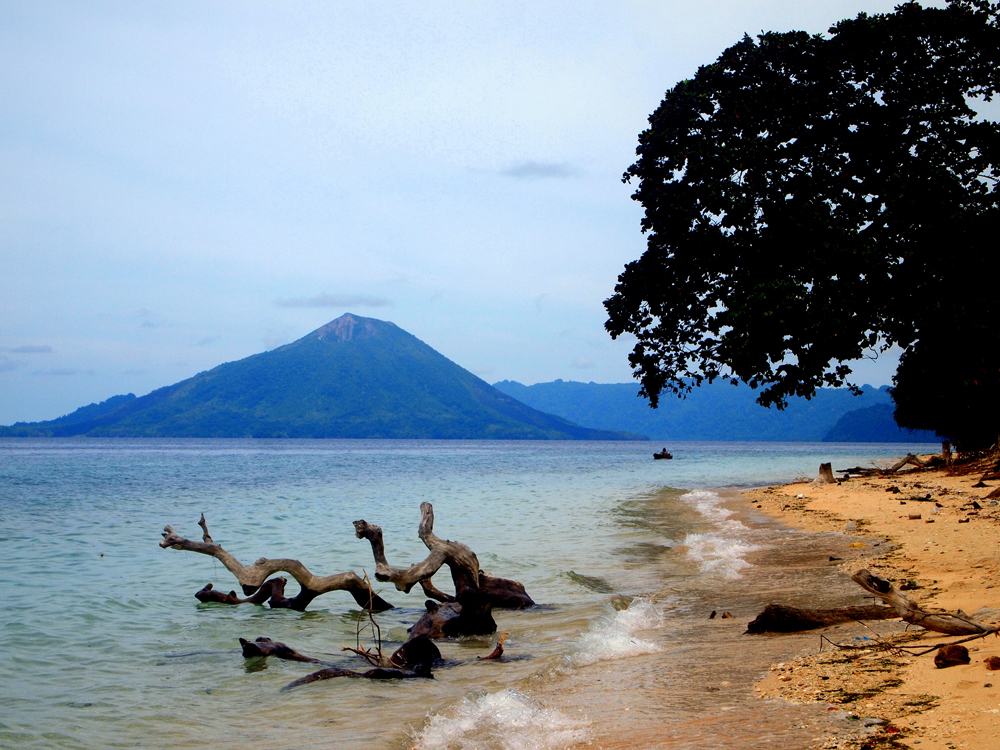
As the tiny plane rumbles and coughs through the morning mists, the sea below is like a mirror. Early sailors called these latitudes the doldrums because of the stagnating calm they would find themselves in after weeks of no wind. In an era when sailing was the only way to propel boats across the ocean, the absence of winds in this hot and humid climate could mean death. Yet men risked their lives and suffered unimaginable dangers to journey into these distant margins of the then-known world. What compelled them to risk everything to come here?
Like an answer to my questions, the shapes of distant islands begin to appear through the scratched porthole windows. These are the Banda Islands, which along with a handful of others are better known as the fabled Spice Islands. Here money once really did grow on trees and the lure of fortune sparked an age of exploration that changed the world.
In the far eastern reaches of Indonesia's sprawling archipelago, the Spice Islands remain largely forgotten today, but shelter an Eden of astonishing life.
On the fire mountain
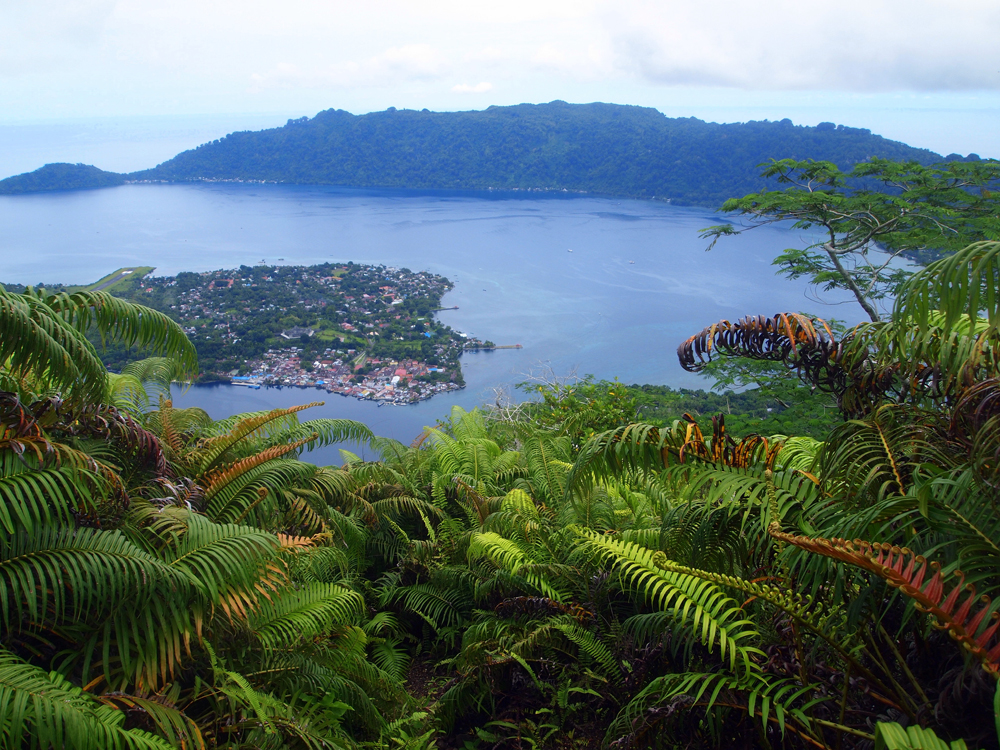
It is hot, sweaty business climbing Gunung Api, the active volcano that rises from the center of the Spice Islands. Overgrown bushes, ferns and enormous spider webs block the trail while crumbling rock frequently gives way underneath. Near the top, sulfuric fumes mingle with cool, salty breezes. Looking out on the open horizons beyond the rim, a gaping crater drops hundreds of feet, trailing crusty old lava flows like a runny nose into the sea.
Straddling the equator, these islands rise like a geologic pimple a sheer 22,000 feet (6,700 meters) from the deep, empty quarters of the Banda Sea. Like many other parts of Indonesia's "ring of fire," they lie along volatile tectonic seams in the Earth's crust. Here the Eurasian, Pacific and Indo-Australian plates all meet, resulting in frequent earthquakes and volcanic eruptions.
These eruptions spew minerals from deep in the Earth's crust to the surface, creating rich soils. Together with the wet, tropical climate, a luxuriant blanket of plants thrive on these islands, including one unique tree species once only found here, the famous but unassuming nutmeg tree, Myristica fragrans.
Spice gold
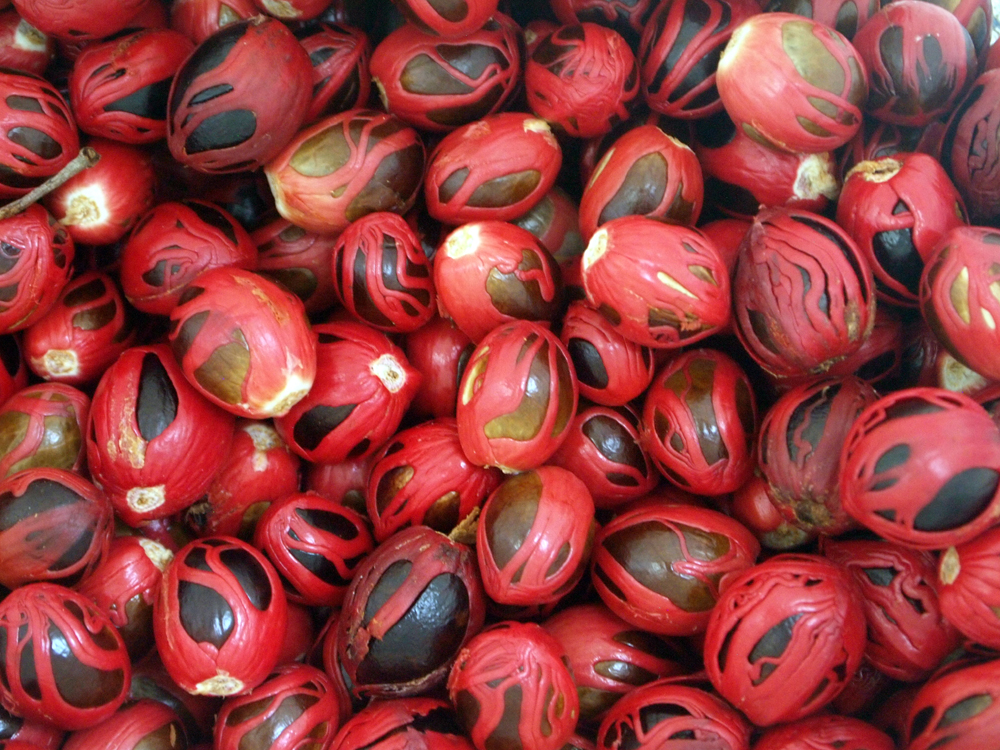
A young boy clamors in the branches above while below piles of yellow- and apricot-colored fruits litter the ground: the refuse from a day's harvest. Nearby in rattan sacks lie the spoils. Like so much treasure the strange seeds of the nutmeg glisten crimson in the forest gloom. Wrapped tightly around the seeds is a sinuous red aril. This is the spice mace.
Best known to most of us today for holiday baking, nutmegs like these were literally worth their weight in gold during the 16th and 17th centuries, the height of the Spice Trade. In a time before refrigeration, spices like nutmeg, mace and cloves helped flavor and preserve foods in medieval Europe, and were rumored to cure many illnesses, including the plague.
Traveling from the Far East across thousands of miles of caravan routes and innumerable middle men, by the time these exotic spices made it to Europe they were coveted commodities. So valuable were they that the financial incentive to discover the source of these spices was perhaps the single most important factor precipitating Europe's Age of Exploration, which led to the discovery of the New World in 1492.
In the jungle gardens
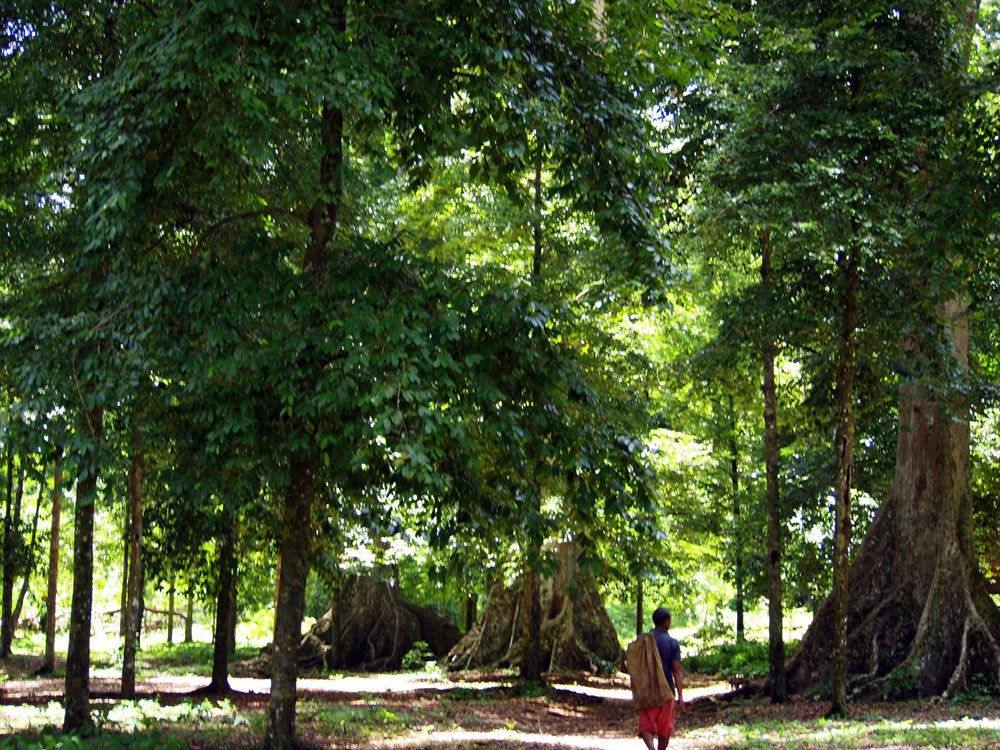
A posse of village schoolchildren guides me through crisscrossed forest trails. Lizards scurry in the dry leaves and the booming of fruit pigeons echoes through the canopy. Propping up this living cathedral the buttressed roots of kenari trees, a nut tree similar to almonds, rise like pillars. In their shade grow the smaller nutmeg trees. Though it feels wild and unkempt, this is a garden grove.
This ancient agroforesty system has been practiced for centuries by local sultanates here. When European explorers finally "discovered" the Spice Islands, everything changed. In a quest to control and monopolize the lucrative spice trade, competing powers radically altered the social, political and natural landscape of these islands.
After years of political alliances, wars and reprisals between locals and European powers it was the Dutch who emerged in 1599 to dominate and take control over the Spice Islands. Thus began the rise of the VOC or Vereenigde Oost-Indische Compagnie in Dutch, otherwise known as the Dutch East India Company. With quasi-governmental powers to wage war, establish colonies, negotiate treaties and coin money, the VOC was arguably the world's first multinational corporation.
The first corporation
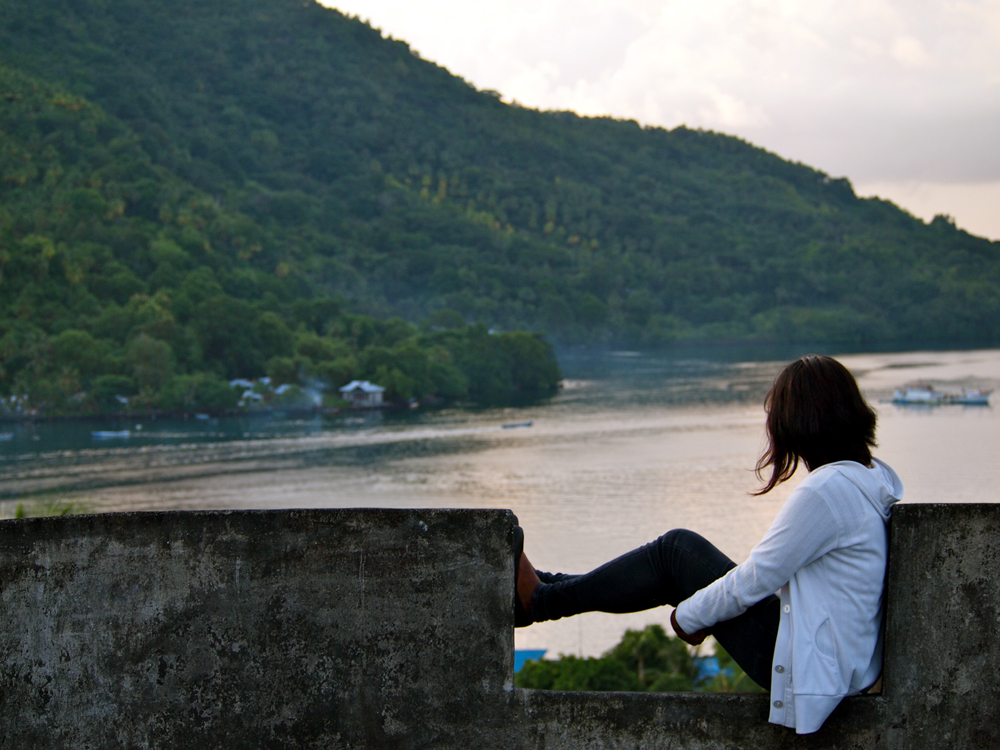
From the hilltop ruins on the island of Lonthor you can look down on the entrance to Banda's harbor and gaze for miles towards the sea's horizon. This was indeed a good place to build a fort. Today, ficus trees poke their veiny trunks through the ruins, while spiders and bats are the only inhabitants. Once, though, this place was ground zero for a vast global empire of trade.
By the year 1654 the VOC held control of nearly all of the Spice Islands in eastern Indonesia. Yet one island lay beyond their grasp, the tiny island of Palua Run. Following many unsuccessful skirmishes to seize it from the British, the VOC negotiated what today could be interpreted as one of the worst trades in history. In exchange for Palua Run the Dutch gave the British a remote outpost in the New World called New Amsterdam, better known today as Manhattan.
Despite the returns on that trade, the VOC got what they wanted at the time: absolute control over the Spice Islands and thus a monopoly on the lucrative spice trade.
Money that grows on trees
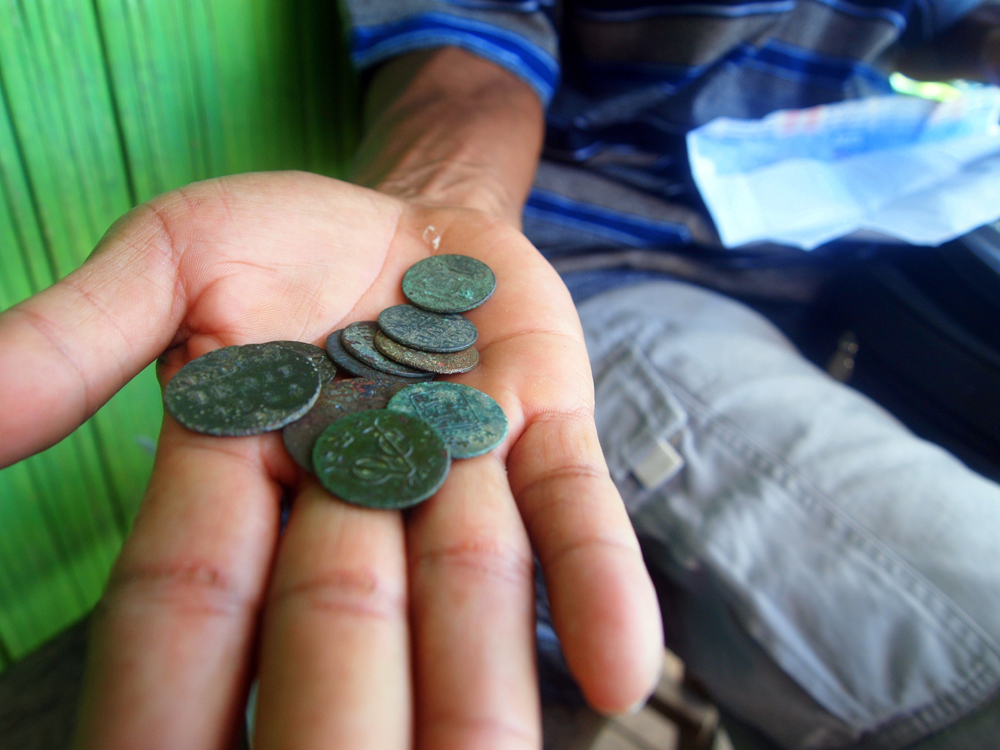
In the markets of Banda Neira's harbor fantastic things are to be found. Bright reef fish for the cooking pot lie paraded on outdoor tables. Bags of cloves and piles of cinnamon bark beckon to passengers. And if you ask, old timers will even show you things like pearls, Dutch era pottery and old VOC coins like these.
Between 1602 and 1769 the VOC sent almost a million Europeans to work in Asia and made enormous profits monopolizing the spice trade. Their power came at a huge human cost though. The native Bandanese population was virtually wiped out.
Slaves were brought in to work the nutmeg groves, similar to American plantations, and an iron fist discouraged competition. Thus, for almost two centuries money really did grow on trees, but only in the Bandas. It was inevitable that it couldn't last.
Ruined by the birds
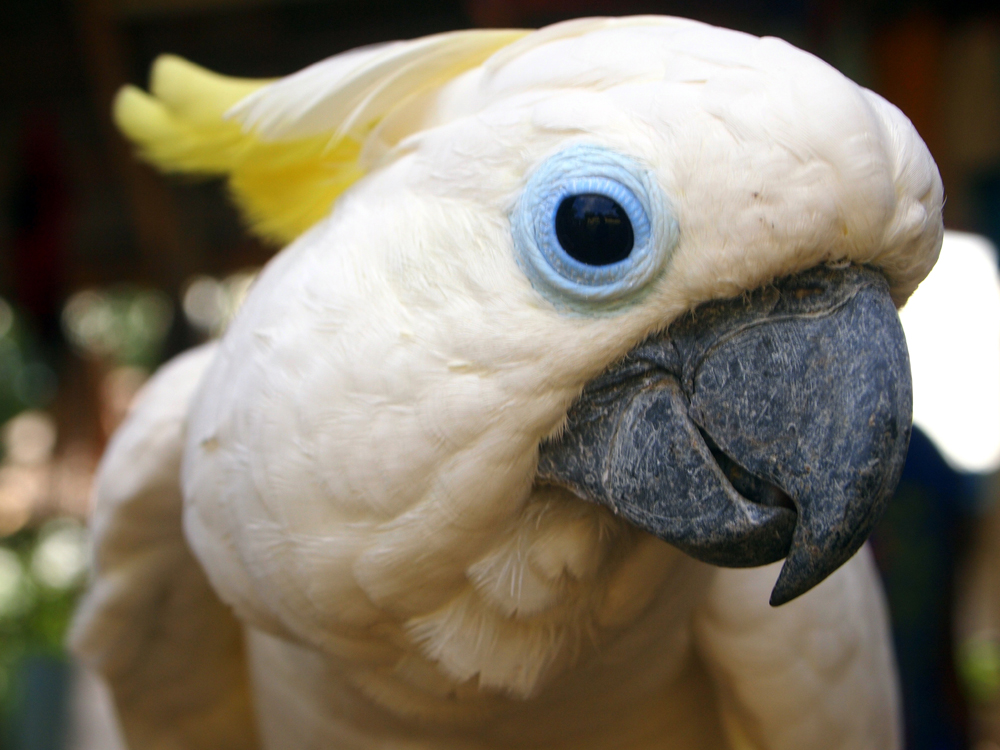
In the waning years of the VOC's influence the famous British naturalist Alfred Russel Wallace visited the Bandas while collecting specimens across the Far East. He wrote about the nutmeg gardens, but he was more interested in the unique plants and animals he saw, such as this cockatoo. Perhaps he sensed another wealth in these islands. Though the VOC could control men and markets, they could not control nature.
By the 18th century, corruption was bankrupting the VOC. Meanwhile their grip on the spice monopoly had been broken as smugglers began to establish nutmeg on other islands outside of VOC control, such as Zanzibar and Mauritius in the Indian Ocean.
Ironically, native Bandanese fruit pigeons (Ducula concinna) likely played a key role in distributing nutmeg as well. These birds eat the nutmeg fruits and naturally expel the seeds wherever they go, including other islands. Here, nutmeg could grow naturally without VOC "permission" and once again thrive. Imagine, an empire ruined by pigeon poop!
Get the world’s most fascinating discoveries delivered straight to your inbox.
Lost in the corla triangle
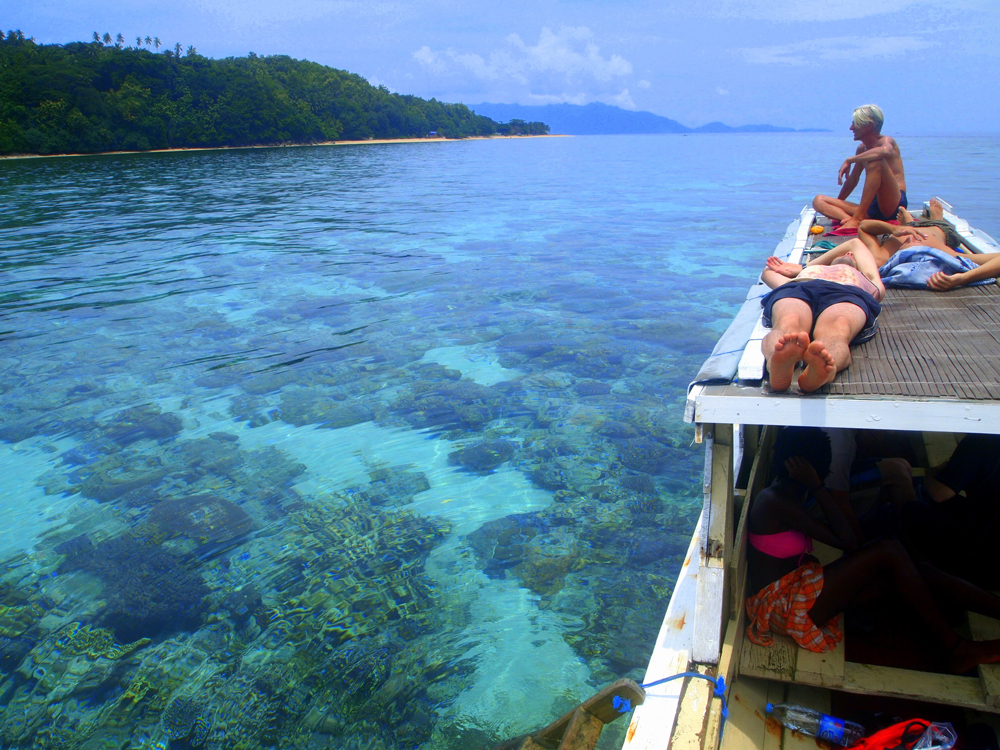
Shoals of damsel fish shimmer in the sunbeams that cut through the water, while deeper in the sea bigger things lurk. Lumbering Napolean wrasse migrate between the coral gardens while parrotfish audibly graze below. Shy reef sharks hover just beyond visibility at the reef edge and the odd sea turtle glides by like a ghost, disappearing into the blue depths.
The Spice Islands sit in the heart of what biologists call the Coral Triangle. Bounded by the Celebes Sea in the west to the shores of Papua New Guinea in the east and north to the Philippine Islands, the coral triangle is the marine equivalent of the Amazon Rainforest.
Within these warm, shallow waters a mind-boggling assortment of marine life thrives. The greatest diversity of iridescent corals, fish, mollusks and marine plants in the world are all found here, making this region a biodiversity hotspot. Though the Bandas may sit in the backwaters of history today, this may be a blessing in disguise. Remote and isolated from the world, a healthy and diverse ecosystem thrives both above and below the waves.
Life from the sea
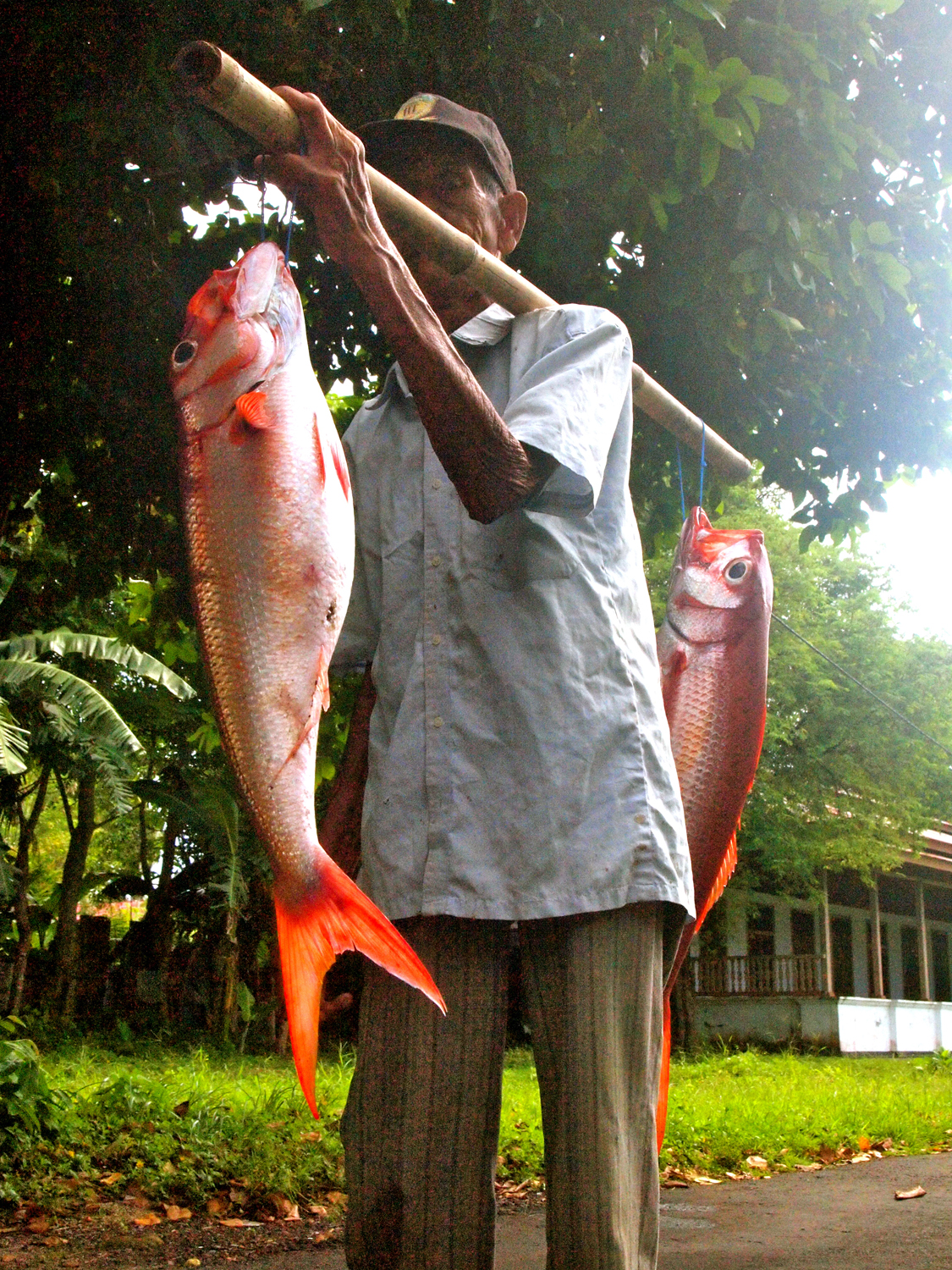
If you wake before dawn, you just might catch the last fishermen motoring out to the reefs. By late morning or afternoon if they are lucky they will be back selling their catch at the modest outdoor market in Banda Neira town: red snapper, rainbow-colored reef fish and even tuna from the deep ocean beyond.
Surrounded by water, life in the Spice Islands today relies heavily on the sea. Though people still grow nutmeg as they always have, no longer does money grow on trees as it did during the heyday of the spice trade. Increasingly today villagers' food and income comes instead from the rich seas that envelop the Spice Islands.
The very richness of these seas threatens them, as multi-national fishing fleets increasingly set their eyes on this region. Insular, and self-contained, a delicate balance must be struck between the local ecology and economy on these islands. Some villagers see small-scale eco-tourism as an alternative and have begun to open their homes to a trickle of tourists willing to brave the long journeys and unreliable transport to snorkel the coral reefs and indulge in the forgotten history of these islands.
In the backwaters of history
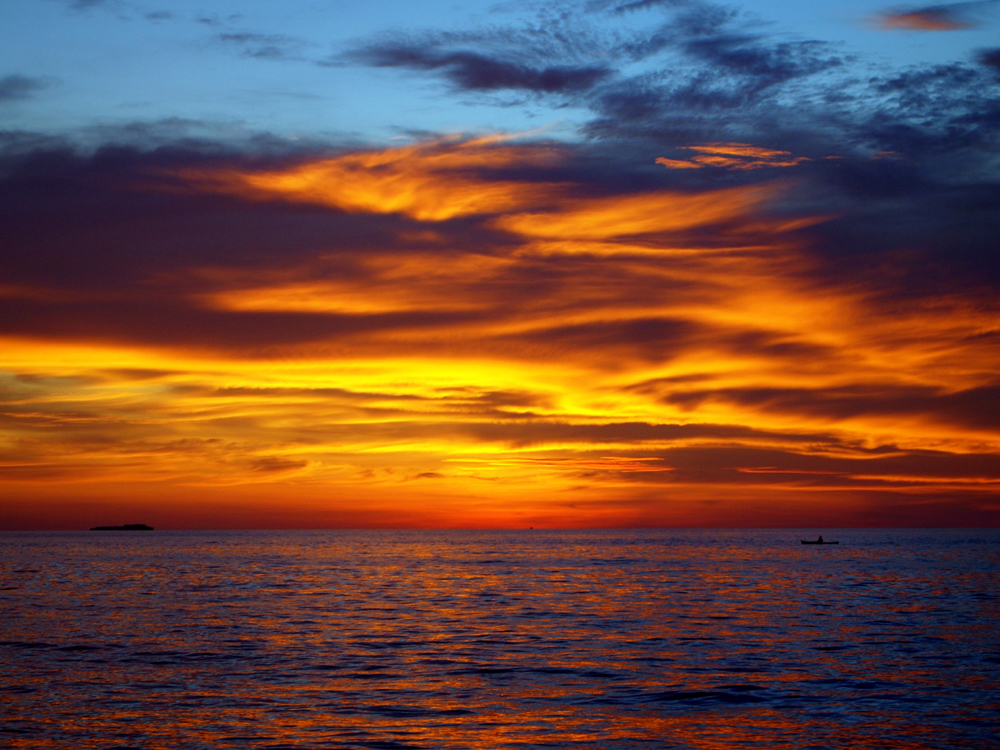
On my last day in the Spice Islands, I wandered through the ancient nutmeg groves to a trail running out to the beach. As the light faded, a chorus of frogs and insect sounds mingled with the lapping waves and fruit pigeons purred in deep baritone voices behind me in the forest. As I watched village fishermen paddle in from the reefs the sun sank into the sea in a lightshow of creamy orange and pink hues.
In the Spice Islands, crumbling Dutch forts, charming little villages under the shadow of steaming volcanoes and ancient nutmeg groves still exist almost frozen in time. Coral gardens shimmer below the waves and shaggy bougainvillea flowers blanket the village avenues.
Its wonders forgotten in the backwaters of history, the wealth of the Spice Islands remains alive today in vibrant village communities, lush forests groves and pristine reefs. Like an accidental Eden, nature thrives suspended like a time capsule in a sea of change.


